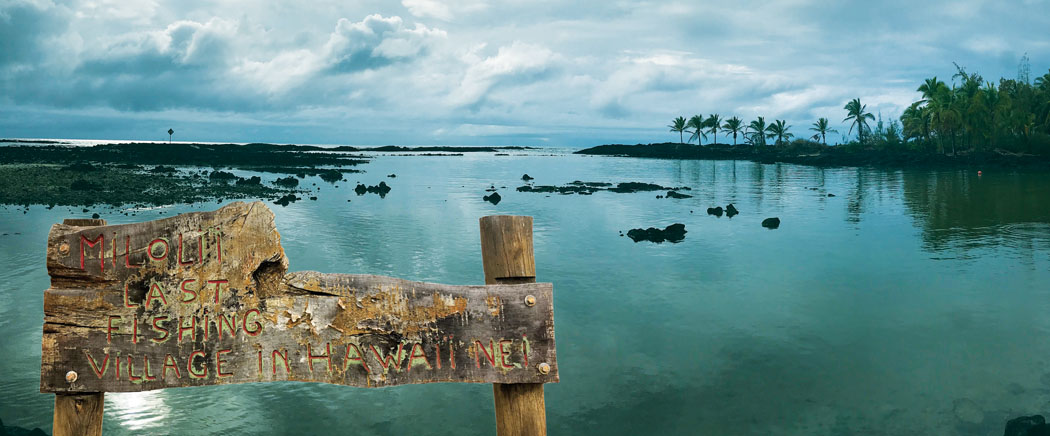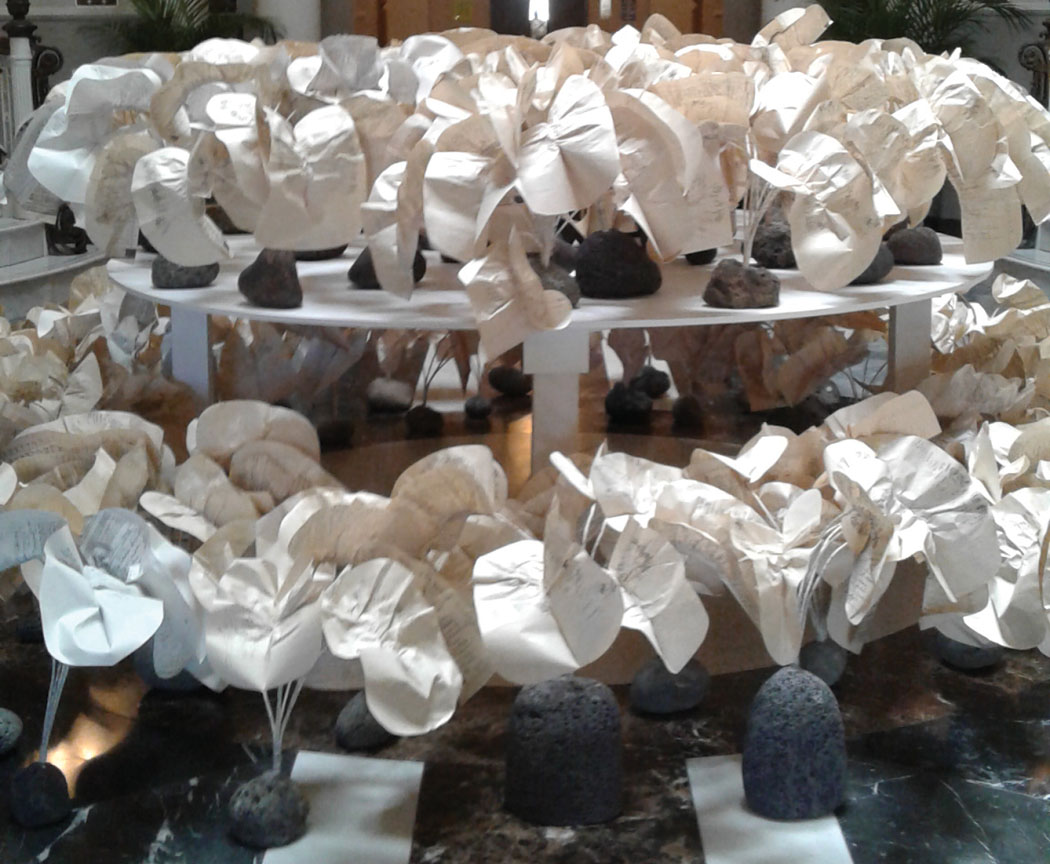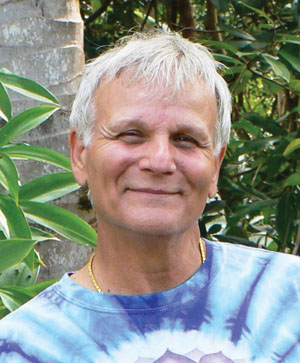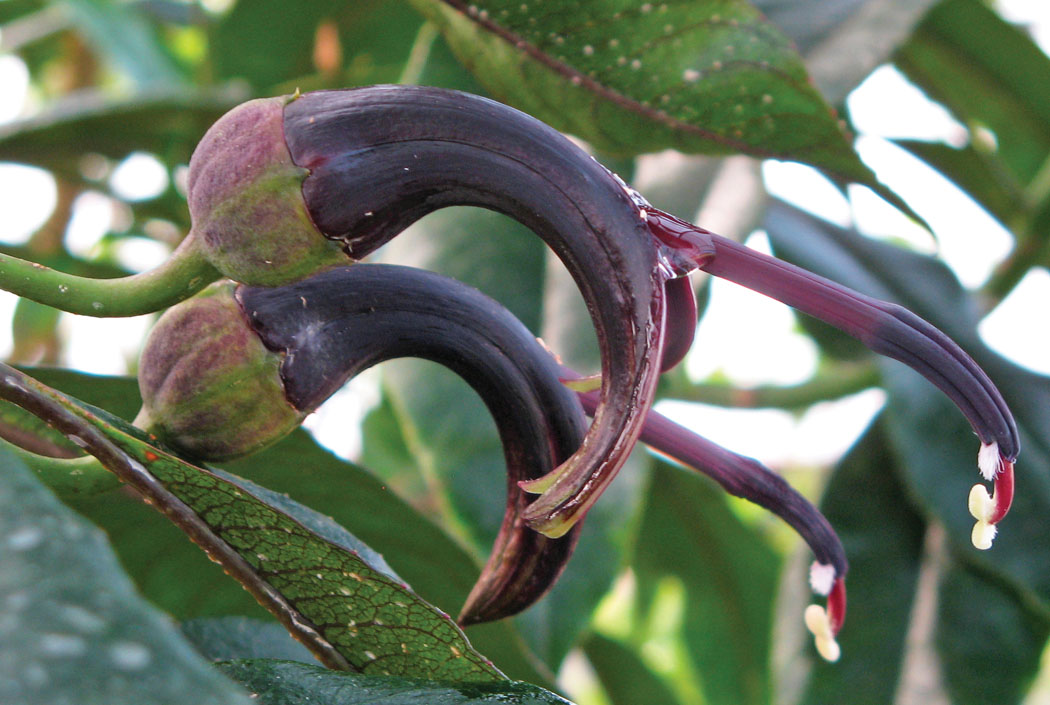
Mālama Mokupuni—Caring for Our Island Environment: Saving ‘Oha Wai—How a Rare Hawaiian Plant Has Been Given Life

By Rachel Laderman
“When we think something is gone and we find it again—there aren’t adequate words to describe it,” says Rob Robichaux, University of Arizona professor and rare plant recovery collaborator. “It’s beyond thrilling.”
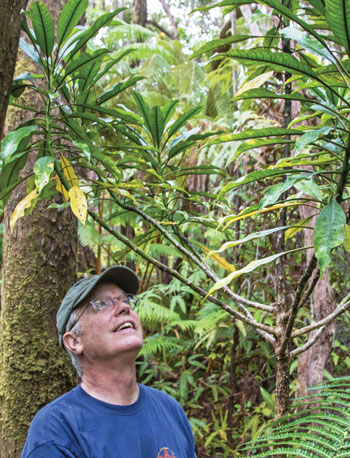
In about 1999, the last known wild Pele lobeliad (Clermontia peleana) died. The Pele lobeliad, ‘ōhā wai, is a large shrub with beautiful, deeply curved dark purple tubular flowers that lives on Hawai‘i Island. It is one of 126 species of native lobeliads scattered across the Hawaiian Islands; almost half are listed as endangered and at least 20 appear to be extinct.
Fearing its extinction, Volcano Rare Plant Facility horticulturists turned to an old seed collection containing some of the last known Pele lobeliad seeds. “If anyone could get the seeds to germinate, Patty Moriyasu could,” says Sierra McDaniel, who heads the Hawai‘i Volcanoes National Park (HVNP) restoration program. “She is a master.” Patty was able to get one seed to sprout. She raised it to blossom, and with precise hand-pollination, it bore fruits. From these fruits, the facility raised thousands of Pele lobeliad seedlings. However, they needed genetic variety to ensure the species would recover.
In search of any wild specimens, in 2007 a team re-explored the old-growth rainforest where the last Pele lobeliads were seen. The plants had been growing high in the canopy on tree branches, safe from rooting pigs. When they got to the promising area, they looked up.
To their great delight, about 15 feet high on an old ‘ōhi‘a limb, the team spotted a leggy plant with characteristic purplish veins in its broad green leaves. It was a fine Pele lobeliad specimen! “It was a super exciting moment for all of us,” says Rob.
Over the next few years, teams found five more individuals, all growing high in old ‘ōhi‘a, in forests damaged by hooved animals.
Some of these wild plants were blooming, but they bore very few fruits. The mud puddles made by pigs’ hooves are breeding places for mosquitoes, which carry diseases that kill native honeycreepers adapted to pollinate Pele lobeliad flowers. Unpollinated flowers won’t form the bright orange fruits that pass on their tiny seeds.
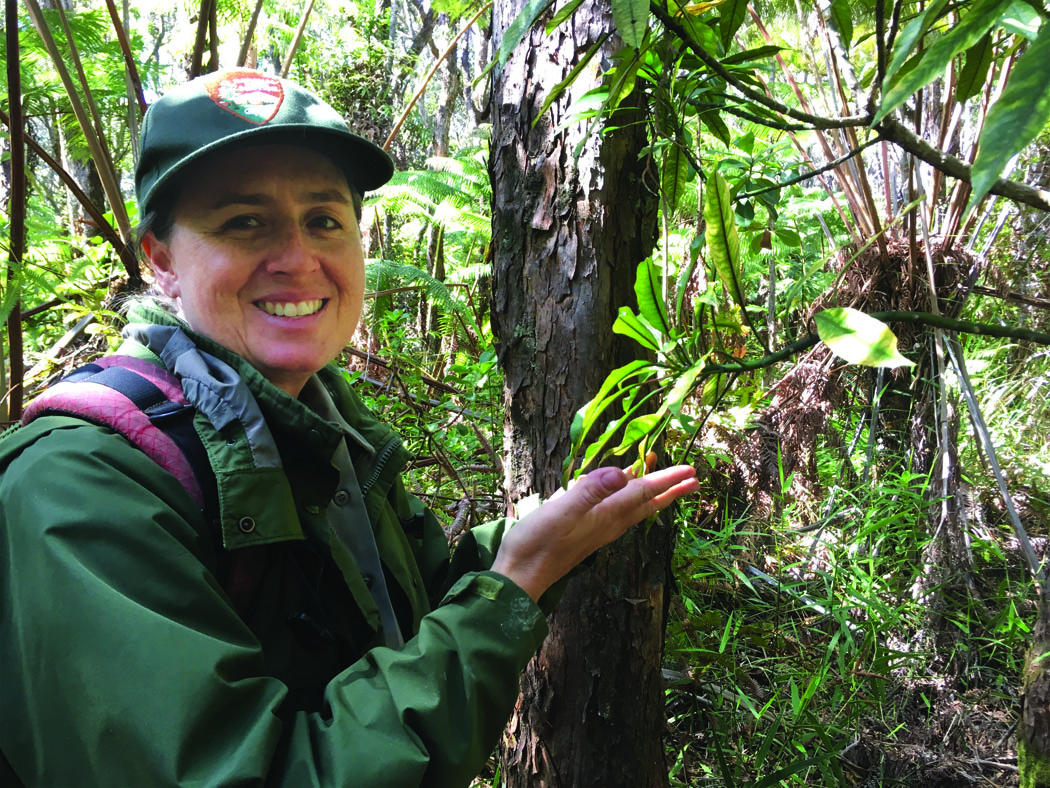
Hanging from a Tree
Luckily the Rare Plant Facility staff has many skills. To propagate these precious plants, horticulturist Jaime Enoka and colleagues adapted a technique called air layering, in which the stem is carefully sliced with a razor blade to stimulate root growth. To reach the plants, they had to use technical climbing—with rope and harness. “It was very challenging—Jaime had to climb high into the canopy of the native wet forest and hang there on ropes while completing this surgical technique,” observes Rob.
The painstaking effort paid off. The facility produced air-layered cuttings from most of the six new “founder” plants for cultivation. They then carefully hand-pollinated their flowers and used seeds from the resulting fruits to grow hundreds of seedlings from each founder.
Restoring and Protecting Entire Landscapes
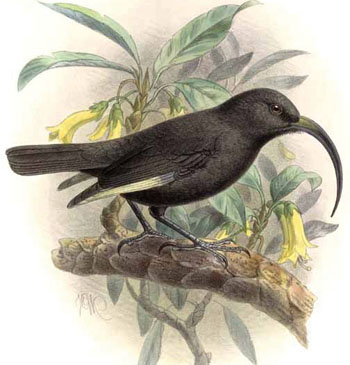
HVNP transplants these and other native plants in large-scale projects with the help of many partners. “This is a team effort; the conservation groups are like a family,” says Sierra. Over 1000 Pele lobeliads have been planted on parklands and more than 4000 on public and private partner lands. These landscapes are specially fenced and have had invasive plants and animals removed. The goal is to allow the ecological and genetic processes unique to volcanic islands, which have gone on for millions of years, to continue.
Pele lobeliads are now blooming higher in the mountains, above mosquito territory, and the first wild fruit has been seen. A motion-detection camera caught the image of an ‘i‘iwi (a rare native honeycreeper) sipping nectar from a related flower. Maybe next it will show an ‘alalā (Hawaiian crow) pecking at a Pele lobeliad’s plump fruit, to then spread the seed to a new location. Maybe, thanks to decades of tenacious work, this evolutionary line has not been broken.
You Can Help
If you live near a native forest park boundary, replace invasive species on your property with non-invasives. Keep an eye on your cats! Cats roam up to 9000 feet and prey on the native birds. Volunteers and donations are critical to improving rare species’ habitats. ❖
For more information and to get involved:
Friends of Hawai‘i Volcanoes National Park: https://www.fhvnp.org/
Plant Extinction Prevention Program: http://www.pepphi.org/
Rachel Laderman, Sustainable Pacific Program, Lynker LLC/NOAA Affiliate, Hawai‘i Island
